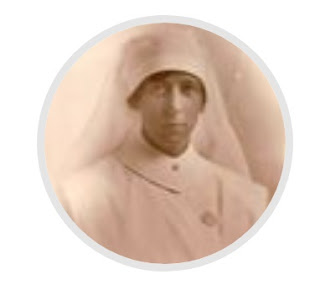The Murder of James Curran.
 |
| Grave of James Curran - SLSA [B 28120] |
James Curran worked at Minnipa on South Australia’s Eyre
Peninsula. He was employed by the Hydraulic Engineers Department, working on
constructing a holding tank for the Tod River water scheme in 1927.
On Sunday morning, 30 January 1927,
Curran had a drink of coffee before breakfast and became ill.
Before he died and in throes of agony,
Curran spoke to the foreman, H.E. Scott. He gave the address of his daughter at
Warrnambool, but before he got to speak his son’s address, he died.[1]
It was believed that poison had been put with sugar that
Curran had used to sweeten his coffee. Police constables Hann and Cain
investigated. They found that a cook from the construction camp had suicided
six months earlier and that recently two pigs, who had eaten scraps from the
camp dinner, had also died. Further investigation was sought.
An inquest was held under the watch of Dr McCarthy of
Wudinna, ordered by Coroner A.G. Collyer-Braham.
At the inquest, Charles Jones, the
assistant cook gave evidence of the morning of Curran’s death. He said that at
7:30 am Curran came into the kitchen with a pannikin. Jones put coffee and
sugar in it. Curran remarked to Jones, “What did you out in this? You are
always putting jokes upon me.”
Jones replied that he hadn’t put
anything in it. Curran asked him to taste it, so he took a teaspoon full, which
Jones thought tasted bitter.
Curran threw out his coffee and was
poured a new one. A short while after drinking it, he shouted “I am poisoned!”[2]
Another witness,
Walter Rowe, a Deputy Government Analyst, stated that he examined the 3 oz. of
sugar in the container. In it, he found a ½ grain of strychnine. There was no
poison in the sugar bag in the storeroom. He also examined Curran’s liver and kidneys
and found enough of the poison present to deliver the fatal blow.
More witnesses were called, and a suspect pointed at. Frank
Styrmin recalled that he had handed a bottle of strychnine to a man named
Schultz who was with Carl Bystedt. A suspect had been found.
Based on circumstantial evidence, Carl Eugene Elwing Bystedt
was committed for murder.[3] Coroner
A.G. Collyer-Braham stated that the evidence against Bystedt was strong. He
commended Detectives Slade and Golds on their investigation into the case and
their collection of evidence, which met with difficult circumstances due to a
large portion of the workers at the camp being foreigners whose first language
was not English.
Coroner Collyer-Braham stated,
“That James Curran came to his death on January 30 at mess
camp at Minnipa through strychnine poisoning, after having drunk a cup
of coffee, in which was mixed sugar containing strychnine.' He stated that the
evidence against Bystedt was so strong that he must face the jury at the next
sitting of the Criminal Court.”[4]
Bystedt was taken to
Adelaide to face charges. The South Australian Crown Solicitor, A.J. Hannan, investigated
the case and decided that there was barely any evidence that pointed toward
Bystedt being the murderer.[5] As
there was no case, Bysted walked a free man.[6]
James Curran is buried in the Minnipa cemetery.
© 2021 Allen Tiller.
[1] 'Poisoning Case at Minnipa.', West Coast Sentinel, (4 February 1927), p. 1., http://nla.gov.au/nla.news-article168243416.
[2] 'Minnipa Inquest.', The Register, (23 February 1927), p. 15., http://nla.gov.au/nla.news-article54886406.
[3] 'Minnipa Tragedy', Barrier Miner, (24 February 1927), p. 4., http://nla.gov.au/nla.news-article45981347.
[4] 'Minnipa Tragedy.', The Register, (25 February 1927), p. 9. http://nla.gov.au/nla.news-article54884520.
[5] 'No Indictment.', The Armidale Chronicle, (9 April 1927), p. 6., http://nla.gov.au/nla.news-article188070777.
[6] 'Minippa Tragedy.', Recorder, (8 April 1927), p. 1., http://nla.gov.au/nla.news-article95872984.




